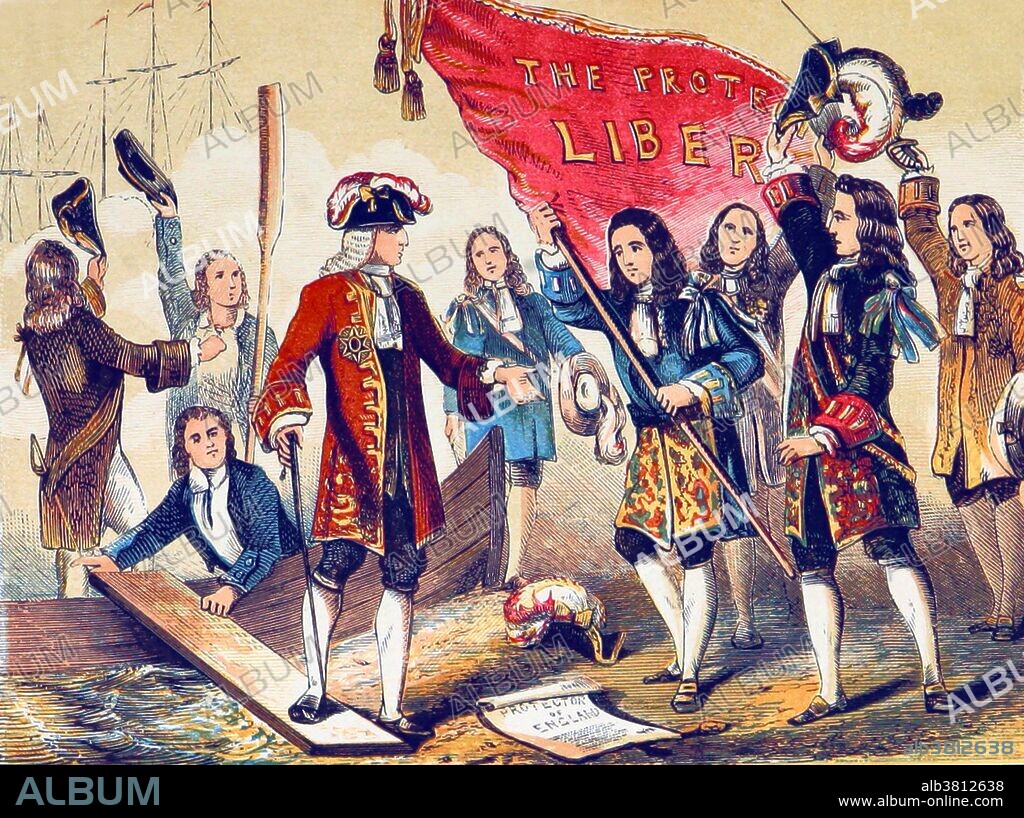alb3812638
William of Orange, Revolution of 1688

|
Add to another lightbox |
|
Add to another lightbox |



Title:
William of Orange, Revolution of 1688
Caption:
The Glorious Revolution, also called the Revolution of 1688, was the overthrow of King James II of England (James VII of Scotland and James II of Ireland) by a union of English Parliamentarians with the Dutch stadtholder William III of Orange-Nassau (William of Orange). The Glorious Revolution was not a war. No soldiers went into battle, and no shots were fired. William's successful invasion of England with a Dutch fleet and army led to his ascending of the English throne as William III of England jointly with his wife Mary II of England, in conjunction with the documentation of the Bill of Rights 1689. The Revolution permanently ended any chance of Catholicism becoming re-established in England. For British Catholics its effects were disastrous both socially and politically: Catholics were denied the right to vote and sit in the Westminster Parliament for over a century; they were also denied commissions in the army, and the monarch was forbidden to be Catholic or to marry a Catholic, this latter prohibition remaining in force until the UK's Succession to the Crown Act 2013 removes it once it comes into effect. Image taken from page 197 of of "A History of England for the Young" by Henry Tyrrell, 1872.
Credit:
Album / Science Source / British Library
Releases:
Model: No - Property: No
Rights questions?
Rights questions?
Image size:
3900 x 2913 px | 32.5 MB
Print size:
33.0 x 24.7 cm | 13.0 x 9.7 in (300 dpi)
Keywords:
1688 • 17TH CENTURY • ART • ARTWORK • BATTLE OF BOYNE • CELEBRITY • DRAWING • EVENT • FAMOUS • GLORIOUS REVOLUTION • HISTORIC • HISTORICAL • HISTORY • ILLUSTRATION • ILLUSTRATIONS • IMPORTANT • KING OF ENGLAND • KING OF IRELAND • KING OF SCOTLAND • KING • MONARCH • MONARCHY • NOTABLE • OVERTHROW OF KING JAMES II • PRINCE OF ORANGE • PROTESTANT • REVOLUTION OF 1688 • ROYAL • ROYALTY • RULER • WELL-KNOWN • WILLIAM AND MARY • WILLIAM OF ORANGE
 Pinterest
Pinterest Twitter
Twitter Facebook
Facebook Copy link
Copy link Email
Email

